Canada’s culinary scene is a flavorful mosaic of traditions, regional specialties, and cultural quirks that make it unlike anywhere else in the world. From coast to coast, Canadians have embraced dishes that blend Indigenous heritage, French and British colonial influences, and a hearty love for comfort food. But while these meals may spark joy and nostalgia north of the border, they can often leave American taste buds… well, a little confused.
Take poutine, for example—a dish so revered it’s practically a national treasure. Canadians can’t get enough of the fries, gravy, and cheese curd combo, but many Americans raise an eyebrow at the soggy results. And then there’s ketchup chips, maple taffy, and snow-cooked molasses treats, which might sound more like childhood science experiments than gourmet indulgences. For every butter tart or Timbit that delights locals, there’s a plate of flipper pie or seaweed pudding that can spark hesitation from curious American diners.
This list isn’t meant to mock—far from it. In fact, the goal here is celebration with a side of curiosity. These 35 beloved Canadian foods are rich in history, fiercely loved by locals, and often linked to specific communities or seasonal traditions. But at the same time, they showcase just how wildly food culture can vary—even between friendly neighbors.
So whether you’re a proud Canadian looking to defend your favorites, or an American ready to try something new (and maybe weird), this list is for you. From the sweet to the savory, the comforting to the downright curious, here are 35 Canadian dishes that might just leave U.S. taste buds scratching their heads—and possibly reaching for seconds. Or not. We’ll let you decide.
1. Poutine
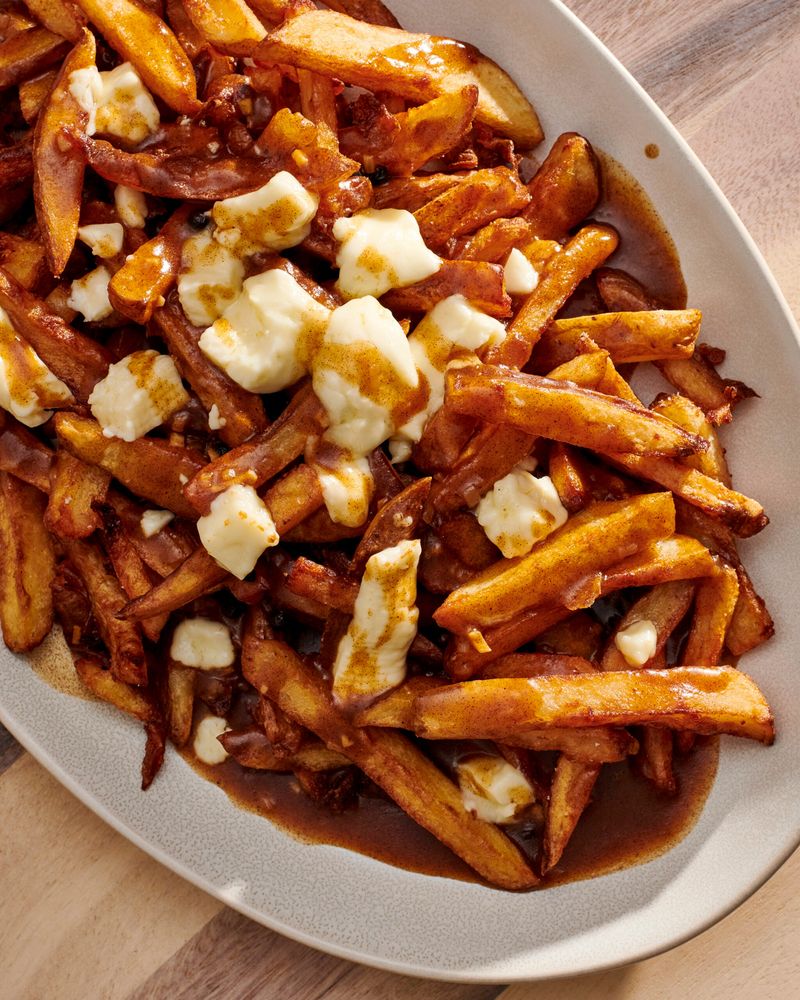
What begins as a plate of fries quickly becomes a gravy-laden, cheese-curd-studded experience that’s hard to forget. Poutine is considered comfort food royalty in Canada, and it’s served everywhere from food trucks to fine dining.
To many Americans, though, the idea of soggy fries swimming in brown gravy sounds more like a kitchen mishap than a national treasure. The texture alone—melted curds mixed with limp fries—can be off-putting to those unfamiliar.
Still, fans argue the flavor fusion is irresistible once you take the first bite. It’s salty, savory, rich, and messy—in other words, peak Canadian indulgence.
2. Ketchup Chips

Bright red and boldly seasoned, ketchup chips are a staple of Canadian snacking culture. Their tangy vinegar kick mixed with sweet tomato flavor makes them instantly recognizable—and often polarizing.
While Americans enjoy ketchup on burgers and fries, the idea of it as a chip seasoning can seem baffling. Some describe the flavor as artificial, while others are simply overwhelmed by the intensity.
Despite that, Canadians can’t get enough. They’re sold year-round, hoarded during road trips, and even spark nostalgia for childhood lunchboxes. To outsiders, they’re odd—but to locals, they’re pure snack gold.
3. Butter Tarts

These gooey little pastries are a Canadian holiday staple and fiercely defended in bake-off competitions across the country. Made with flaky pastry and a sugary, syrupy filling, they’re unapologetically sweet.
For Americans used to pecan pie or custard tarts, butter tarts can come across as too sticky or one-note. The filling often oozes out in a way that feels more mess than magic, especially without nuts to break it up.
Still, many Canadians consider them sacred. Whether enjoyed plain or with raisins, they’re a nostalgic nod to grandma’s kitchen and beloved for their chewy, caramelized centers.
4. Caesar Cocktail
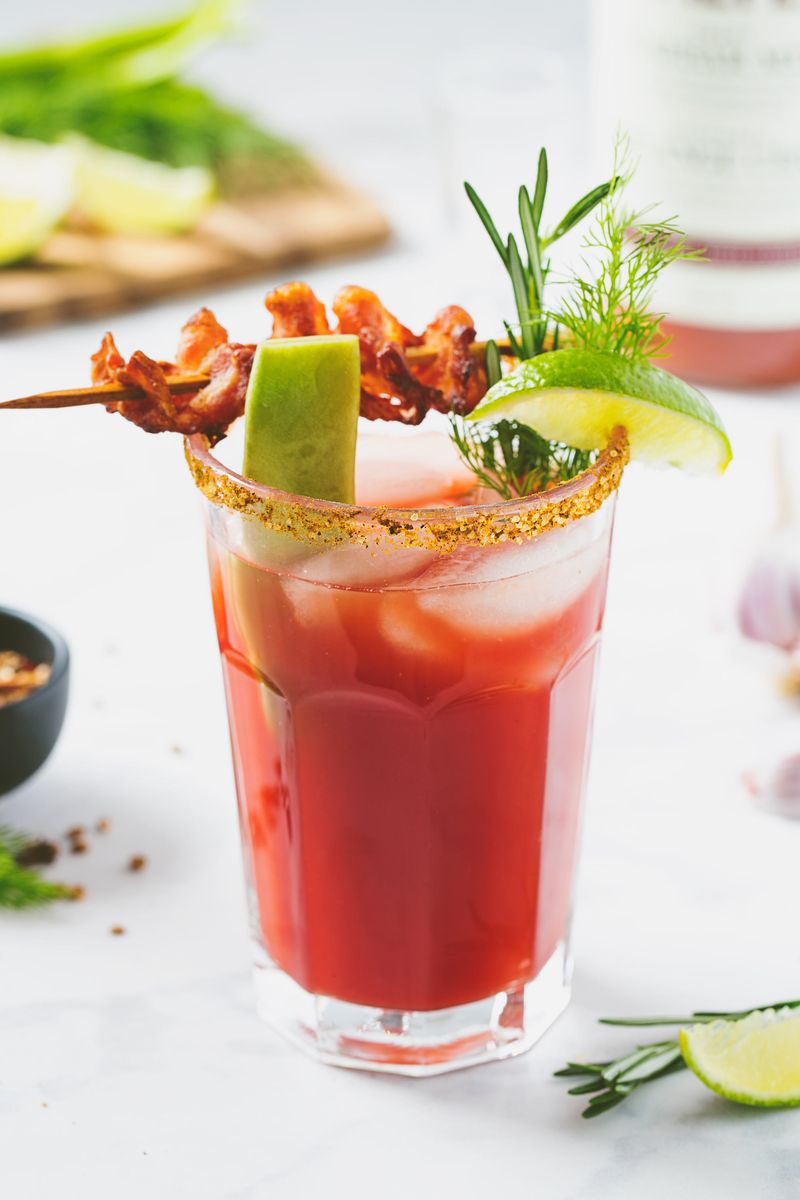
It might look like a Bloody Mary, but this Canadian classic swaps tomato juice for clam-spiked Clamato. The result? A briny, spicy, and savory drink that’s an acquired taste for many.
Americans often balk at the idea of drinking clam juice—especially for brunch. The combination of vodka, celery salt, hot sauce, and shellfish essence can feel like a dare rather than a cocktail.
In Canada, however, it’s celebrated as a hangover cure and menu mainstay. Decked out with pickles, bacon, or even mini burgers, the Caesar is more than a drink—it’s a cultural phenomenon.
5. Tourtière
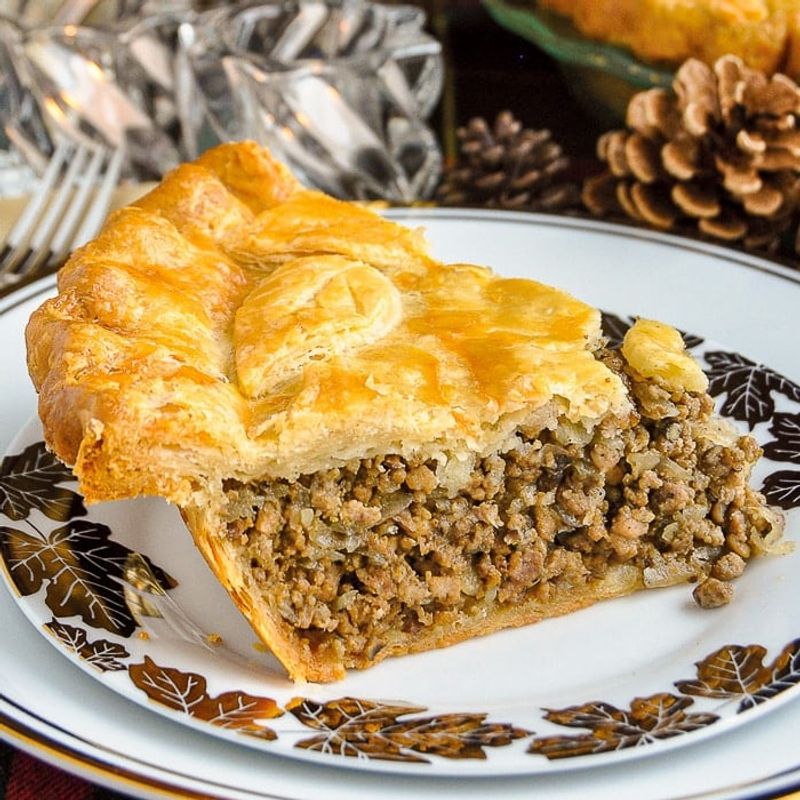
This savory meat pie is a proud French-Canadian tradition, often served around Christmas and New Year’s. The spiced pork or beef filling is encased in buttery crust, with hints of cinnamon and clove.
Americans may find the flavor profile confusing—those warm spices are usually reserved for desserts, not dinner. The texture can also vary from finely ground meat to chunky stew-like filling, which catches some off guard.
Still, tourtière has deep cultural roots. Families pass down recipes through generations, and one bite can transport Canadians to festive family gatherings and cozy winter nights.
6. BeaverTails
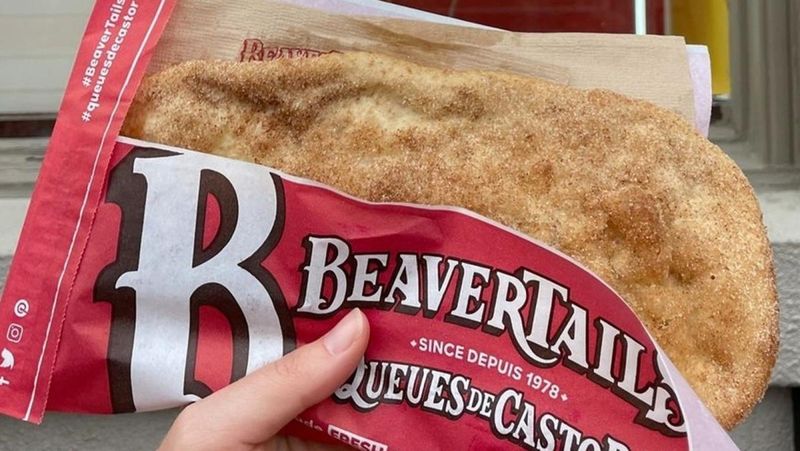
A beloved carnival snack, BeaverTails are flat, deep-fried pastries stretched to resemble—you guessed it—a beaver’s tail. Toppings like Nutella, cinnamon sugar, and Reese’s pieces make them a sweet indulgence.
But for American visitors, the visual and the name can be puzzling. Combine that with a chewy, slightly oily texture, and it doesn’t always scream “dessert winner” to first-timers.
In Canada, though, BeaverTails are a rite of passage. Whether eaten skating along Ottawa’s frozen Rideau Canal or at summer festivals, they’re cherished for their nostalgia and sheer over-the-top joy.
7. Split Pea Soup
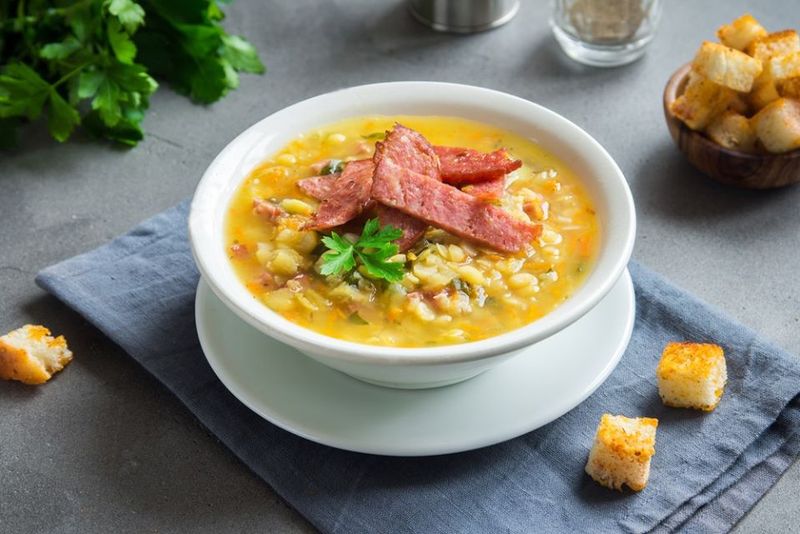
This thick, smoky soup is a staple of Québécois cuisine and often features chunks of ham and a hearty dose of dried yellow peas. It’s warm, comforting, and sticks to your ribs.
For Americans used to thinner, more delicate soups, this version can feel dense and overly salty. The texture—more like a puree than a broth—might strike some as more baby food than meal.
Still, split pea soup is rooted in Canada’s rustic culinary history. It’s often tied to long winters and family kitchens, making it more than just a soup—it’s a symbol of survival and simplicity.
8. Peameal Bacon
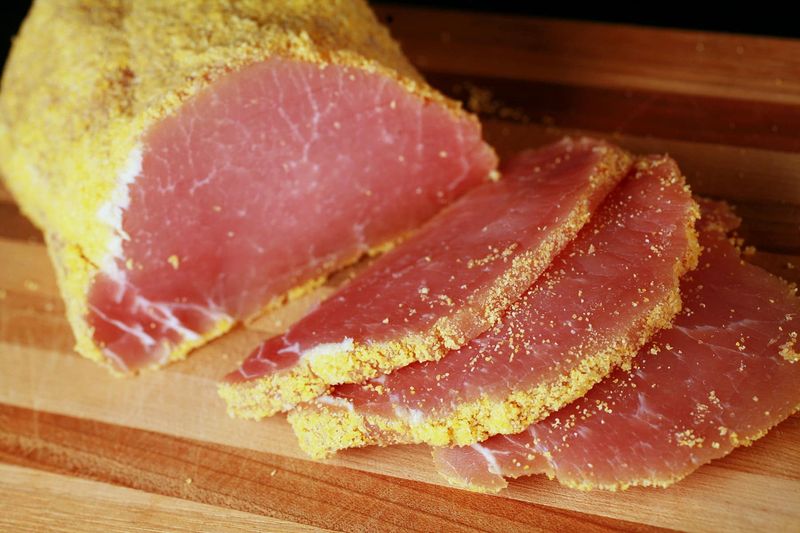
Often called “Canadian bacon” in the U.S., peameal bacon is actually a cured pork loin rolled in cornmeal and sliced thick. It’s juicy, savory, and a weekend brunch favorite in Ontario.
To Americans expecting the crispy, fatty strips of their own bacon, this leaner, chewier alternative can be a letdown. Its mild flavor and soft bite may feel more like ham than the bacon they know.
That said, locals love it for its hearty texture and lower fat content. Served on a bun or alongside eggs, peameal bacon is Toronto’s signature meat—and it’s not trying to be anything else.
9. Toutons
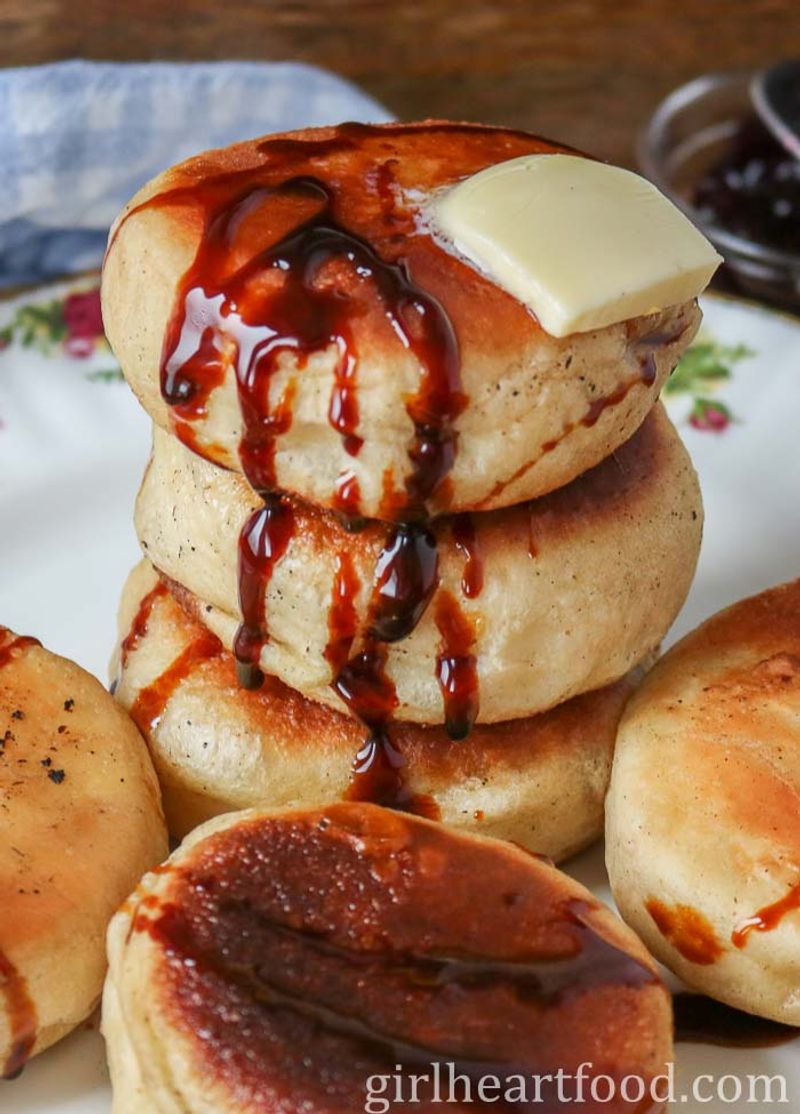
Hailing from Newfoundland, toutons are pan-fried discs of bread dough, often served for breakfast with a drizzle of molasses. Crispy outside and doughy inside, they’re simple and satisfying.
To outsiders, however, toutons can seem plain or heavy. Without toppings, the flavor leans bland, and the chewy texture can be off-putting to those expecting a donut-like sweetness.
Yet for many Newfoundlanders, toutons are more than food—they’re tradition. They speak of snow days, campfire breakfasts, and local pride. One bite, and you might find yourself unexpectedly hooked on their rustic charm.
10. Saskatoon Berry Pie

A prairie province favorite, Saskatoon berry pie is made with small, purple berries that look like blueberries but taste more like almonds and earth. Wrapped in golden pastry, it’s a summertime classic.
American pie lovers may expect tartness or juiciness, but Saskatoon berries are more subtle, with a mild, almost gritty texture that can throw off first-time tasters.
Still, the pie is a cherished part of Western Canadian identity. Often served at fairs and family gatherings, it’s a slice of prairie pride—less showy than its southern cousins, but rich in history and flavor.
11. Bannock
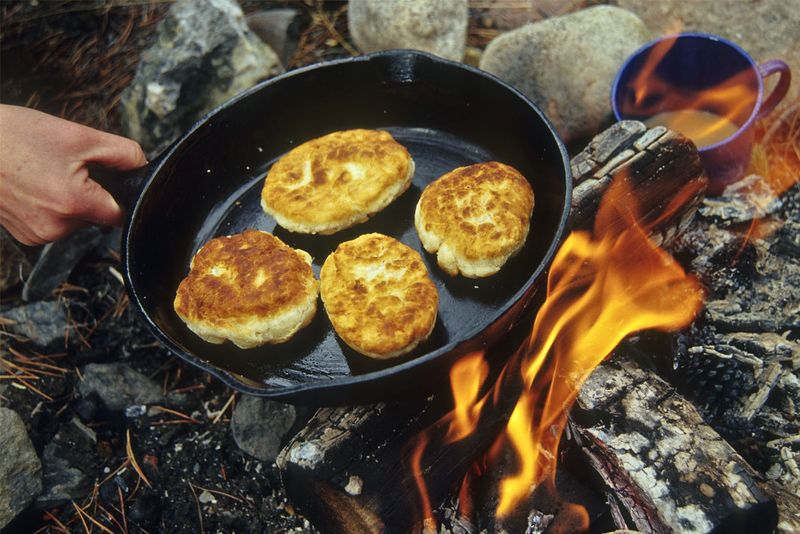
Originally an Indigenous staple, bannock is a versatile bread that can be baked, fried, or grilled. It’s dense, chewy, and often enjoyed with jam or butter during outdoor gatherings.
Those unfamiliar might find its texture surprisingly heavy or dry. It lacks the fluffiness of sandwich bread or the sweetness of modern quick breads, which can lead to some puzzled reactions.
But bannock holds cultural significance across Canada. It’s more than food—it’s a symbol of resilience and heritage. Whether cooked over a campfire or served in a café, it remains a strong thread in Canada’s culinary fabric.
12. Figgy Duff
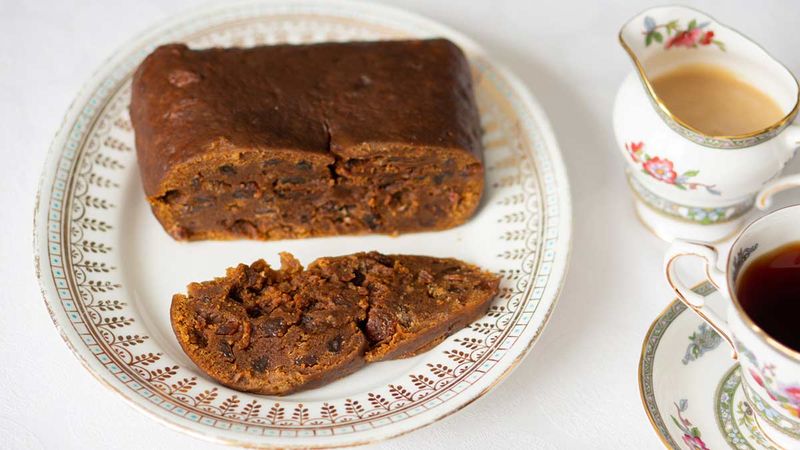
This Newfoundland dessert might sound British—and it is, sort of. Figgy duff is a boiled pudding made with molasses, raisins, and breadcrumbs, steamed in a cloth or pudding bag.
To American palates, the dense, spongy texture and deep molasses flavor can feel outdated or overly rich. It’s more reminiscent of historical cooking than modern-day sweets.
But for Canadians in the Maritimes, figgy duff evokes nostalgia and holiday warmth. Often served with a brown sugar sauce, it’s not just dessert—it’s a warm, sticky slice of old-world tradition passed down with pride.
13. Kraft Dinner
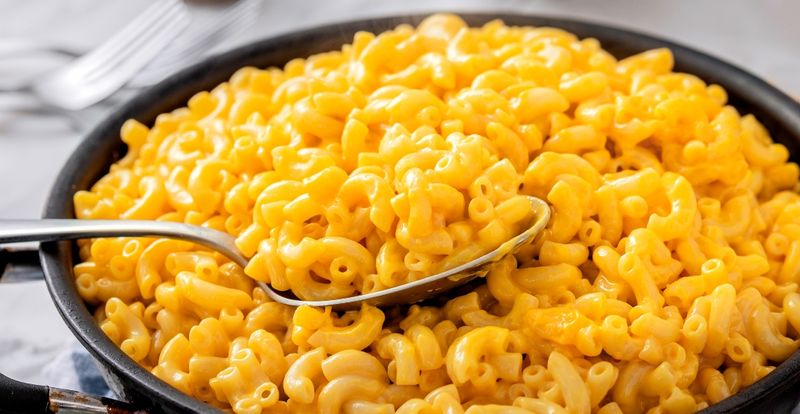
It may look like boxed mac and cheese, but in Canada, Kraft Dinner is practically a cultural icon. Known affectionately as “KD,” it’s a fast, affordable comfort food embraced by generations.
Americans are familiar with Kraft Mac & Cheese, but they might not understand the obsession. Many find it overly salty, oddly orange, and lacking the creamy depth of homemade versions.
Still, KD holds a firm spot in Canadian hearts. Whether eaten plain or doctored up with ketchup or hot dogs, it’s considered essential pantry fare and even a rite of passage for broke college students.
14. Maple Taffy

Made by pouring hot maple syrup directly onto fresh snow, maple taffy becomes a sticky, chewy lollipop rolled up on a popsicle stick. It’s a winter treat rooted in sugar shack culture.
For the uninitiated, it’s a sticky mess. The syrup hardens quickly and can cling to teeth with an almost glue-like intensity, making cleanup nearly as memorable as the flavor.
But to Canadians, especially in Quebec, it’s a beloved seasonal experience. Children and adults alike gather for this snowy ritual, where cold air and hot syrup collide in sweet, nostalgic harmony.
15. Molasses Snowball Cookies
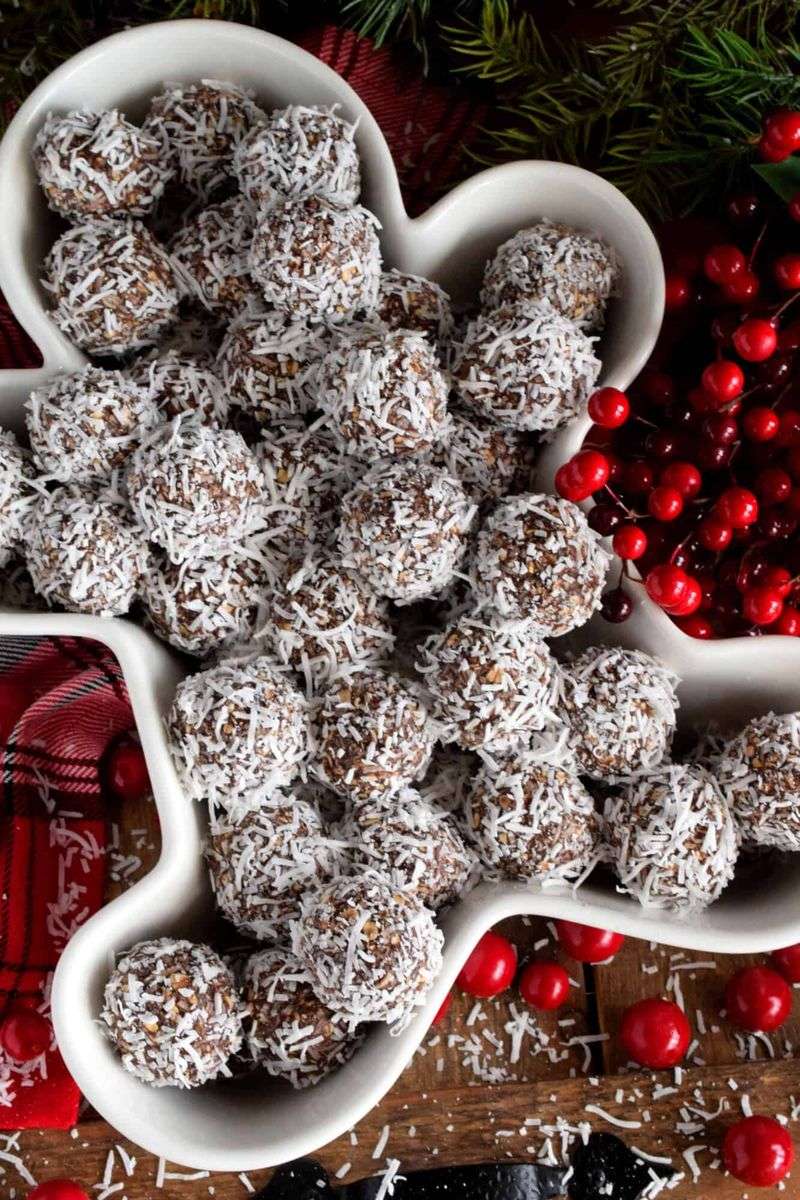
These dense, dark cookies are rolled in coconut and packed with molasses flavor, making them a holiday staple in Newfoundland and the Maritimes. They’re chewy, rich, and built to last.
For Americans unfamiliar with molasses-forward desserts, the flavor can be overwhelming—bold, bitter-sweet, and a far cry from typical sugar cookies. The gritty texture and strong spice might not win everyone over.
Still, snowballs hold a special place in Canadian baking culture. Made in big batches and stored in tins for weeks, they’re less about dainty presentation and more about tradition, family, and the taste of home.
16. Rappie Pie
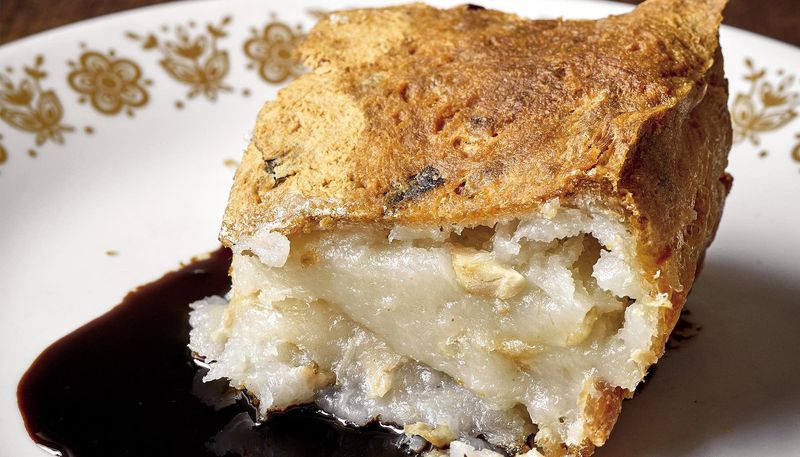
A curious mix of grated potatoes and meat, rappie pie hails from Nova Scotia’s Acadian communities. The dish is gelatinous, savory, and often made with chicken or clams.
To outsiders, the texture is the biggest hurdle. It’s gooey, almost translucent, and not quite what many expect from a “pie.” The bland, beige appearance doesn’t help sell it either.
Yet for Acadians, rappie pie is a symbol of resilience. Its time-consuming preparation and rustic ingredients connect generations, turning a humble pot of potatoes into a culinary badge of identity and heritage.
17. Persians
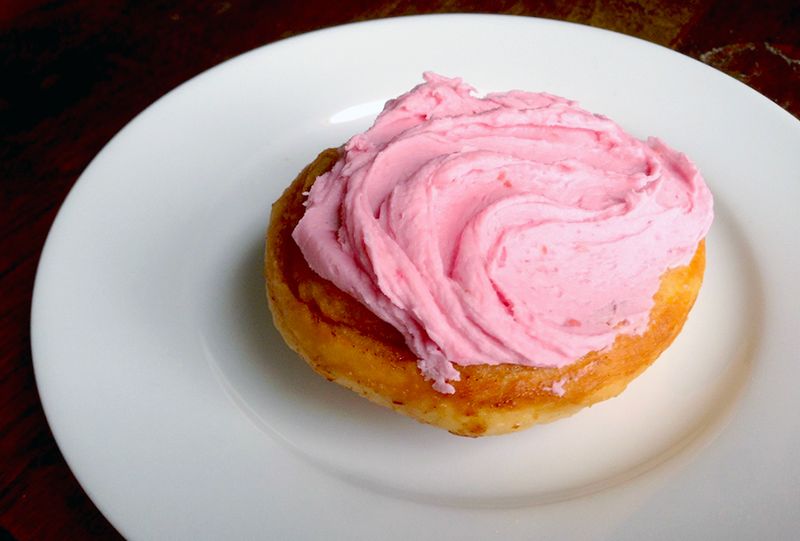
Despite the name, Persians are a Thunder Bay original—a coiled cinnamon bun topped with a bright pink strawberry glaze. They’re sweet, sticky, and often enjoyed with coffee.
For many Americans, the combination of artificial berry frosting and cinnamon pastry feels disjointed. The pink icing might read more “dessert pizza” than breakfast treat.
But in their hometown, Persians are iconic. Sold at local bakeries and fundraisers, they’re more than just a pastry—they’re a point of civic pride that locals happily defend one pastel bite at a time.
18. Lunenburg Pudding
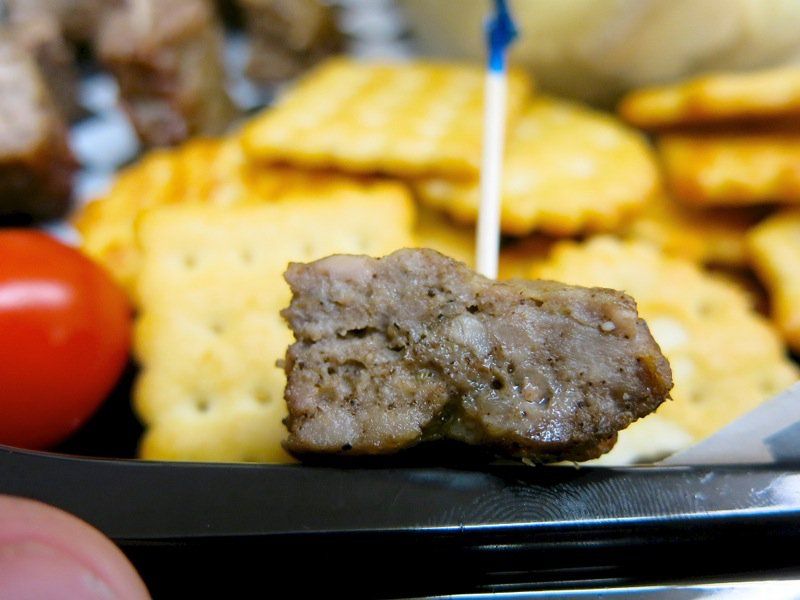
This little-known Nova Scotian delicacy is a spiced, liver-based sausage that’s sliced and fried like scrapple. It’s savory, meaty, and usually served with potatoes or beans.
For American diners unaccustomed to organ meats, the intense flavor and soft texture can be hard to love. It’s more pudding in name than in appearance, which can also throw people off.
Still, Lunenburg pudding holds a distinct place in Maritime cuisine. It’s tied to old-world preservation methods and regional identity, making it more than just breakfast meat—it’s a living culinary tradition.
19. Schwarties Hash Browns

A dish with cult status among Canadian cookbook lovers, Schwartie’s Hash Browns are made by mixing frozen potatoes with sour cream, cheese, and cream of mushroom soup, then baking to golden perfection.
For Americans, the idea of dressing up frozen hash browns this way might seem excessive or retro. The heavy, creamy texture doesn’t exactly scream “modern brunch.”
Still, in Canadian homes, it’s potluck royalty. Served at gatherings and holidays, this cheesy casserole is the kind of dish people request by name—and scrape clean when no one’s looking.
20. Blueberry Grunt
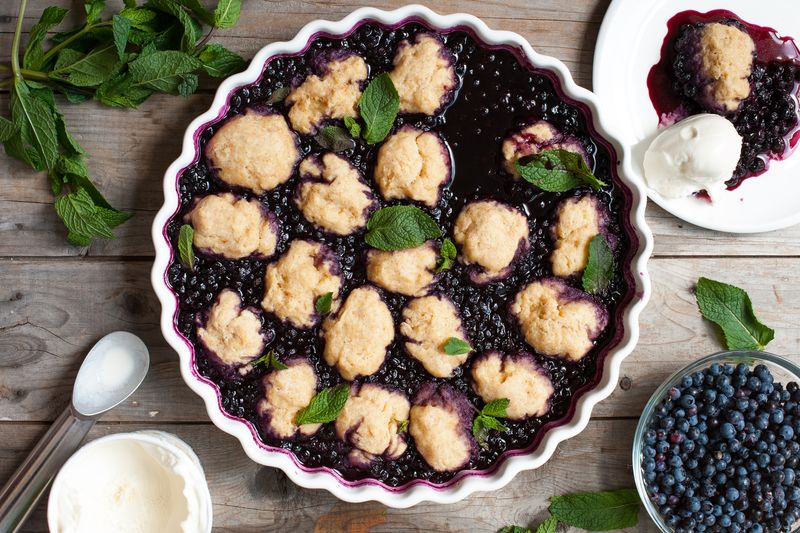
A summertime staple in Atlantic Canada, blueberry grunt pairs stewed wild blueberries with doughy dumplings steamed right on top. It’s tart, sweet, and served warm with cream.
To Americans expecting pie or crisp, the soft, biscuit-like topping and wet texture can feel more like a cobbler gone soggy. The name doesn’t help its appeal—it’s more confusing than appetizing.
Still, it’s a dish steeped in tradition and regional pride. Made with local berries and passed down through generations, blueberry grunt offers a comforting taste of East Coast home cooking—even if it takes some getting used to.
21. Crackers with Cheez Whiz

This low-key snack has long held its place in Canadian pantries. Just spread some Cheez Whiz on saltines, and you’ve got a quick, salty, creamy bite beloved by generations.
For Americans used to dips, sprays, or artisanal cheese spreads, this pairing can feel like a step backward. The processed taste of Cheez Whiz and the simplicity of the combo don’t exactly scream “gourmet.”
Yet it’s precisely that no-frills simplicity that wins hearts. Found at holiday parties and hockey nights alike, this nostalgic snack represents a quirky kind of comfort that doesn’t try to impress.
22. Ginger Ale Chicken
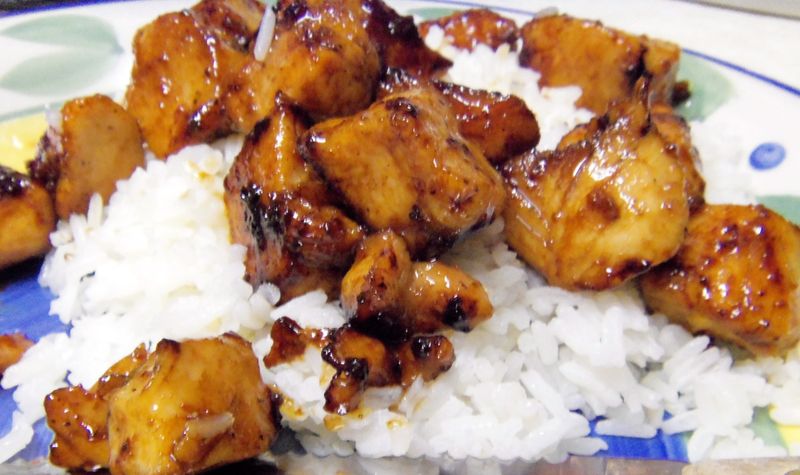
This sweet-savory dish is made by simmering chicken in Canada Dry ginger ale, often with soy sauce or ketchup. The result is tender meat with a glossy, caramelized glaze.
Americans might raise an eyebrow at soda as a cooking ingredient, especially one associated with upset stomachs. The sweetness can overpower the dish, giving it a candy-like aftertaste.
Even so, many Canadians swear by it as an easy weeknight comfort meal. It’s especially popular in home kitchens, where it’s appreciated for being fast, foolproof, and just a little bit weird—in the best way.
23. Bison Burger
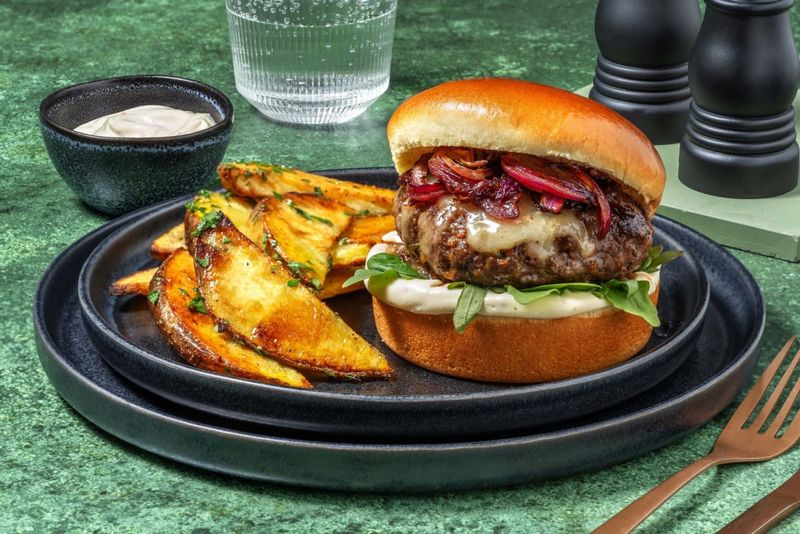
Leaner than beef and rich in iron, bison burgers are a healthier protein choice often featured in Canadian prairie provinces. The meat is earthy, dense, and filling.
For burger-loving Americans, though, bison can be a surprise. It lacks the juicy fat of a classic beef patty and sometimes carries a gamey aftertaste that isn’t for everyone.
Still, many Canadians view bison as a sustainable, locally sourced option. Whether grilled with bold toppings or kept simple, the bison burger is a proud alternative that reflects the country’s wild roots.
24. Oka Cheese
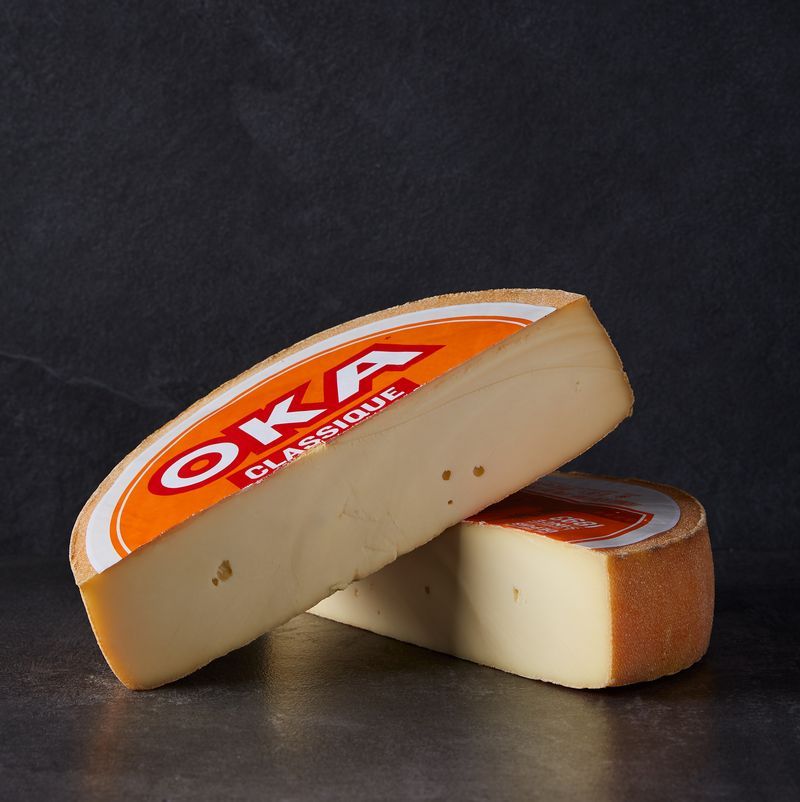
Born in a Quebec monastery, Oka is a semi-soft, washed-rind cheese known for its pungent aroma and buttery, nutty taste. It’s a staple on Canadian cheese boards.
For American cheese lovers, the strong smell alone can be a dealbreaker. Its rind has a funk that’s not for the faint-hearted, and its creamy, earthy flavor can linger longer than expected.
Still, Oka holds a revered status in Canada’s dairy world. Whether melted on bread or eaten solo, it’s a bold bite of French-Canadian heritage that continues to win over adventurous palates one wedge at a time.
25. Kraft Peanut Butter

In Canada, Kraft Peanut Butter is as iconic as maple syrup. Its ultra-smooth texture and sweet, roasted flavor are instantly recognizable and fiercely loved by generations.
To Americans accustomed to brands like Jif or Skippy, Kraft can taste too sweet and even slightly artificial. The flavor profile leans more dessert than protein snack, which surprises some.
But for Canadians, the green-lidded jar evokes nostalgia. From school lunches to midnight snacks, it’s a pantry must-have that’s more than a spread—it’s a cultural comfort food.
26. Flipper Pie

Made with seal flippers, this Maritime dish is a relic of Newfoundland’s coastal hunting history. It’s usually baked in a pie with onions and rich gravy, served during seal season.
For Americans—and many Canadians too—the idea of eating seal is difficult to digest. The meat is dark, oily, and has a strong marine flavor that’s hard to mask.
Yet for coastal communities, flipper pie is a seasonal delicacy tied to heritage and survival. While controversial, it’s rooted in tradition, resourcefulness, and a deep connection to the sea.
27. Dulse
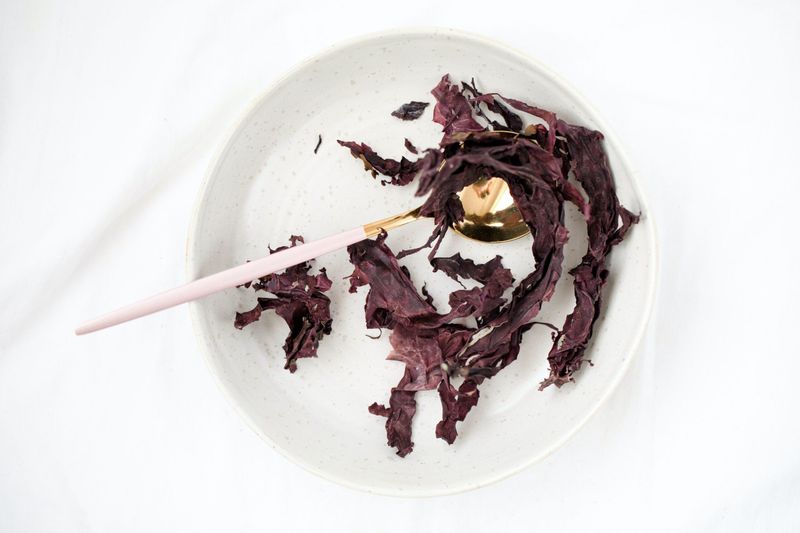
Harvested along Atlantic Canada’s shores, dulse is a red seaweed dried and eaten as a snack. It’s salty, briny, and chewier thn your average chip.
To newcomers, its fishy scent and leathery texture can be off-putting. Some compare it to chewing salty paper or ocean jerky—not exactly your average snack food.
But locals swear by it. Rich in minerals and umami, dulse has been enjoyed for centuries. Whether eaten plain, crumbled on popcorn, or added to stews, it’s a uniquely Canadian coastal treat.
28. Tarte au Sucre

Tarte au sucre, or sugar pie, is Quebec’s answer to pecan pie—minus the pecans. Made with brown sugar, cream, and flour, it’s incredibly sweet and silky.
For Americans expecting complexity or crunch, this dessert might feel like pure sugar overload. There’s no texture contrast, and one slice can be more than enough.
Still, it remains a French-Canadian favorite, especially around the holidays. Served chilled or warm, it’s a celebration of simplicity and indulgence that speaks to centuries of rural baking tradition.
29. Chicken Bones Candy
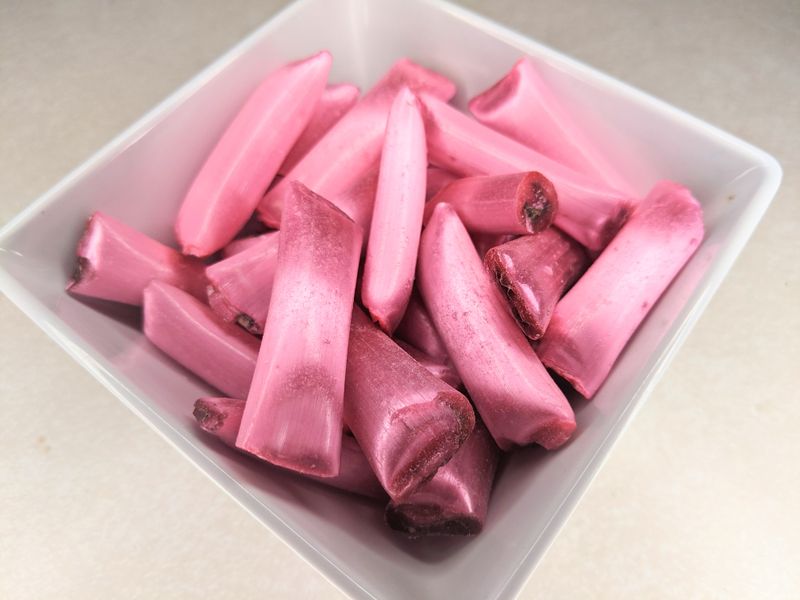
Despite the name, these have nothing to do with poultry. Chicken Bones are cinnamon-flavored hard candies filled with bittersweet chocolate—an unusual combo invented in New Brunswick in the 1800s.
To many Americans, the spicy-sweet candy shell and chocolate core don’t quite harmonize. The texture is jarring, and the name can be more off-putting than charming.
But for Maritimers, Chicken Bones are a holiday favorite with a nostalgic kick. Sold in decorative boxes and shared during winter gatherings, they represent a sweet slice of regional history wrapped in hot pink sugar.
30. Montreal-Style Bagels

These wood-fired bagels are smaller, denser, and sweeter than their New York cousins. Boiled in honey water and baked until golden, they’re often topped with sesame or poppy seeds.
For American bagel lovers, the lack of salt, puffiness, and chewy pull can feel wrong. The sweetness, too, might clash with savory spreads like lox and cream cheese.
Yet in Montreal, these bagels are a beloved breakfast ritual. Fresh from Fairmount or St-Viateur, they’re eaten warm, often without toppings, and celebrated for their distinct texture, flavor, and craftsmanship.
31. Jiggs’ Dinner
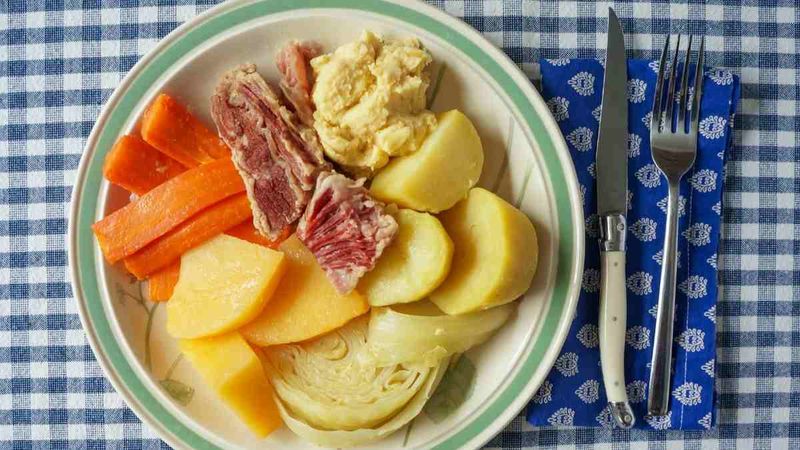
A traditional Newfoundland Sunday meal, Jiggs’ Dinner includes salt beef, cabbage, carrots, turnips, potatoes, and pease pudding—all boiled in one pot. It’s hearty and deeply rooted in maritime culture.
To Americans, it may resemble overcooked stew with a side of beige. The saltiness of the meat and the mushy vegetables often feel more like ration food than comfort fare.
Still, for Newfoundlanders, it’s a weekly tradition filled with family and history. Jiggs’ Dinner isn’t just about flavor—it’s about gathering, storytelling, and celebrating the enduring spirit of a rugged, proud province.
32. Pouding Chômeur
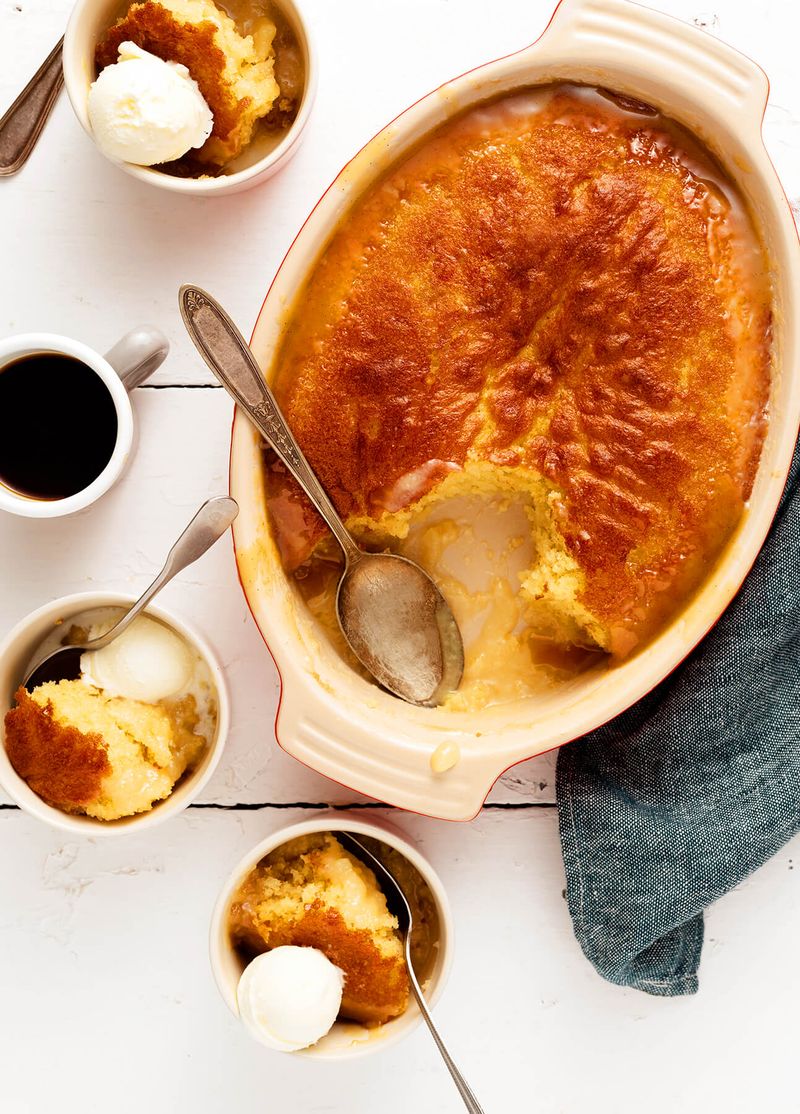
This Depression-era dessert from Quebec translates to “unemployed man’s pudding.” Made by pouring hot syrup or caramel over simple cake batter, it bakes into a rich, self-saucing treat.
To American eaters, the ultra-sweet, soggy texture can be overwhelming. It lacks the contrast or structure many desserts offer and can feel more like a sugar soup than cake.
Yet for French-Canadians, it’s a symbol of resilience and comfort. Passed down through generations, pouding chômeur is more than a sweet ending—it’s a cultural story baked into every indulgent bite.
33. Ployes
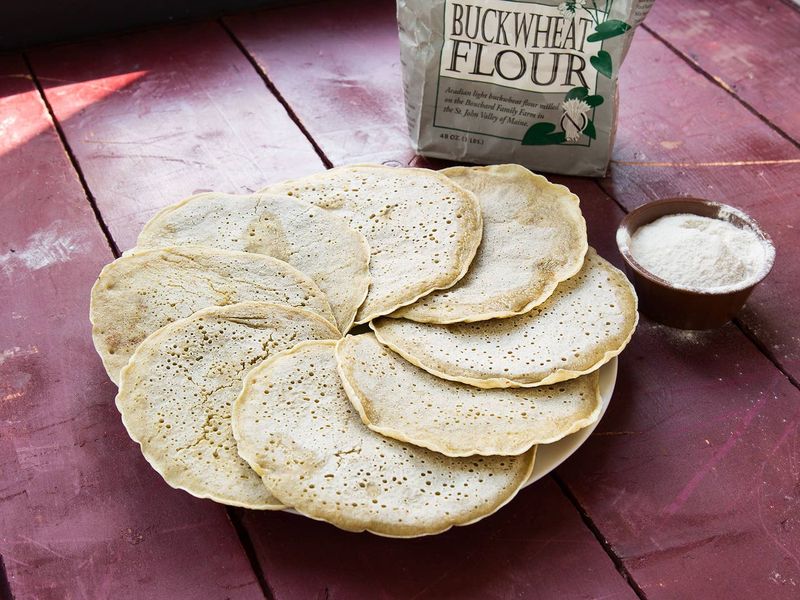
Popular in northern New Brunswick and parts of Quebec, ployes are buckwheat pancakes cooked only on one side. They’re light, spongy, and served with everything from baked beans to maple syrup.
Americans might find their limp, porous texture odd and their slightly sour buckwheat flavor a little too rustic for breakfast. The fact they’re never flipped adds to the curiosity.
But for Acadian communities, ployes are essential. They bridge sweet and savory meals and often replace bread at family tables. Their unique look and flavor are steeped in heritage and small-town pride.
34. Gorton
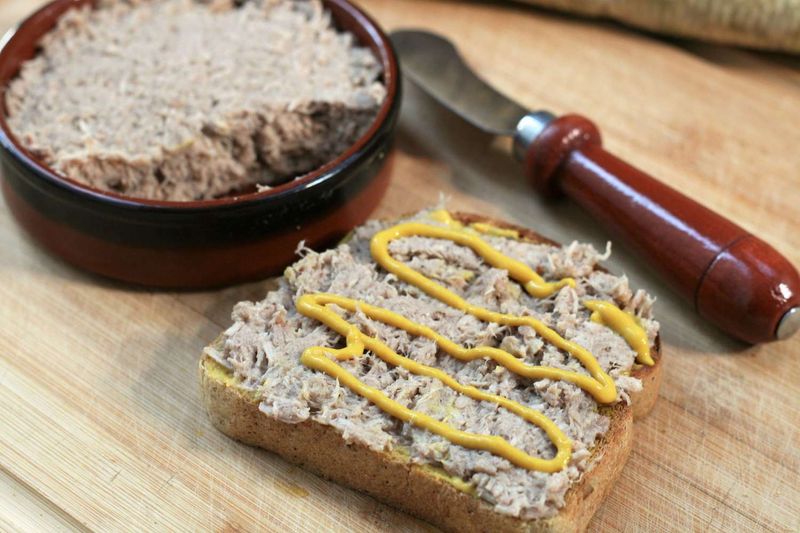
Also known as cretons, this pork spread is a Quebecois breakfast staple. Made with ground pork, onions, milk, and warm spices, it’s served cold on toast or crackers.
To Americans, the sight of meat paste at breakfast can be a bit unsettling. Its pale gray color, pâté-like texture, and cinnamon-infused flavor often defy expectations.
Still, gorton is a comfort food with deep roots. It’s beloved for its simplicity, affordability, and unique flavor profile. For many Quebec families, no breakfast is complete without a thick spread of this savory classic.
35. Pâté Chinois
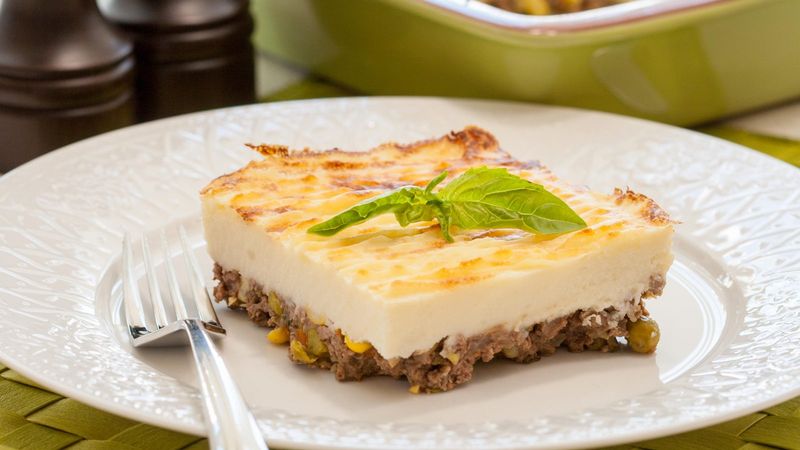
Despite the name, this dish has nothing to do with Chinese cuisine. Pâté chinois is the French-Canadian version of shepherd’s pie, layered with ground beef, creamed corn, and mashed potatoes.
For American diners, the use of canned creamed corn can feel like an odd shortcut. The texture is often soft and homogenous, lacking the contrast or seasoning of more robust casseroles.
Nonetheless, it’s a weeknight staple in Quebec. Simple, budget-friendly, and filling, pâté chinois is a dish built on practicality, nostalgia, and the comforting idea that some dinners just don’t need to be fancy.
Leave a comment